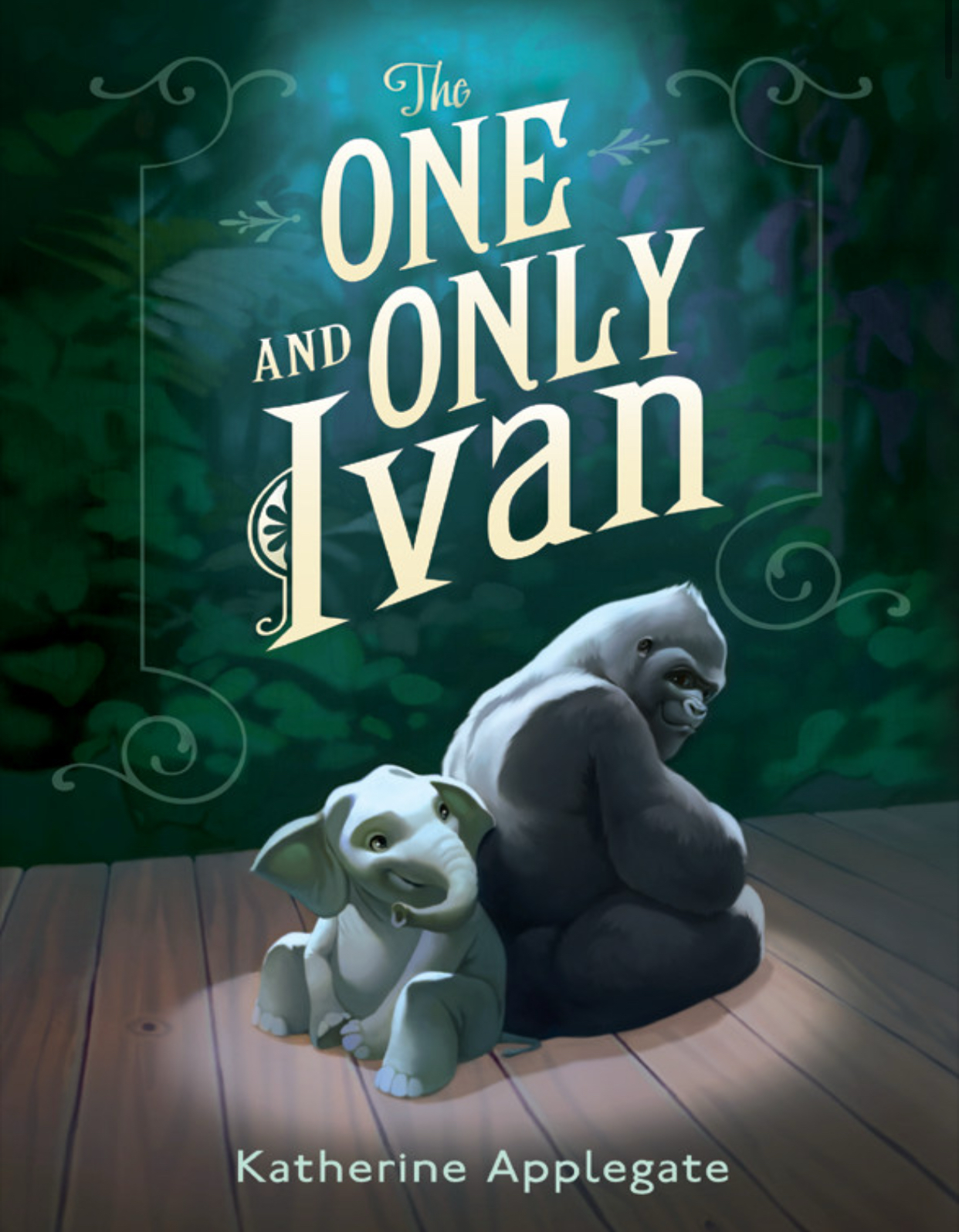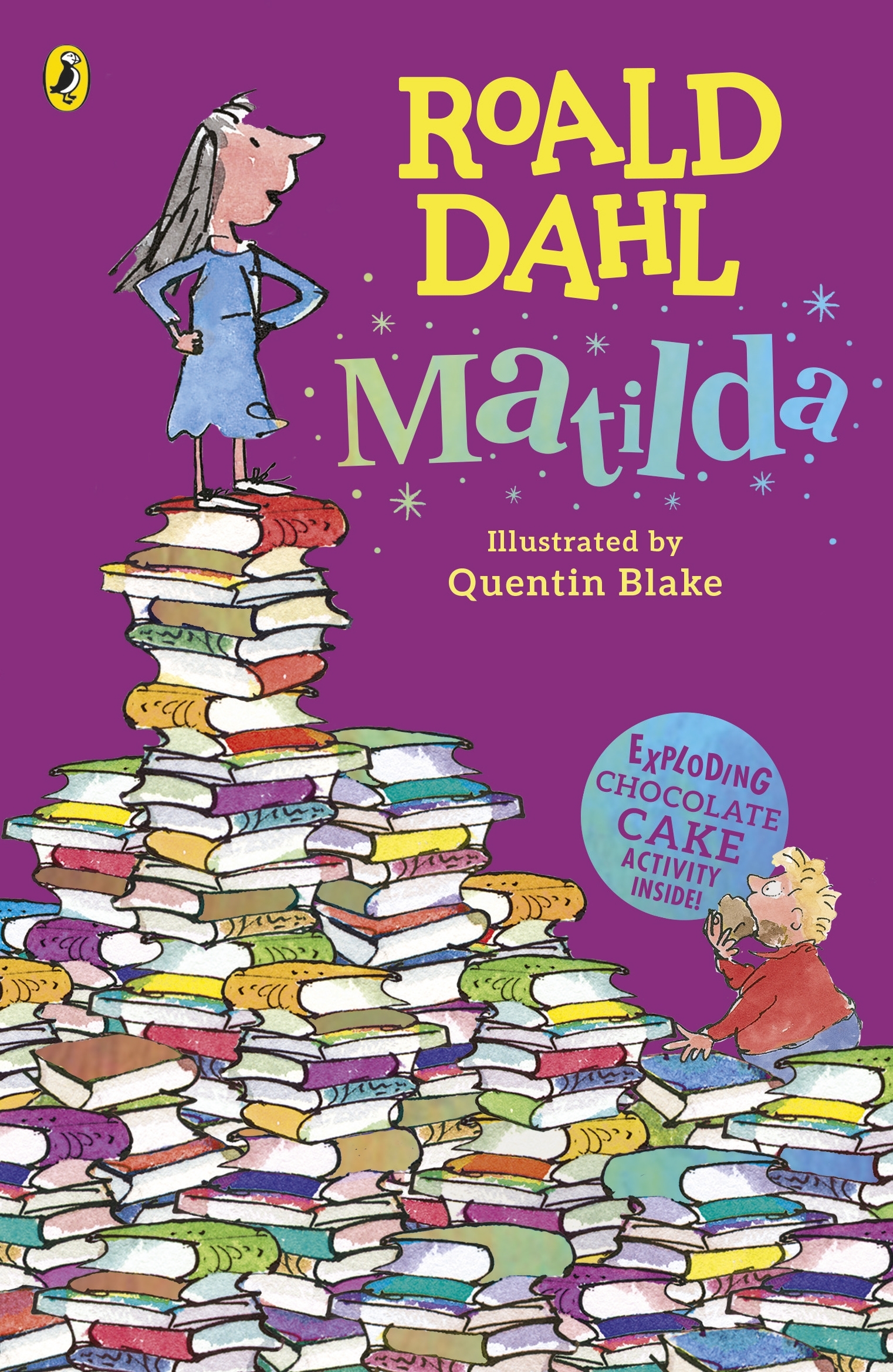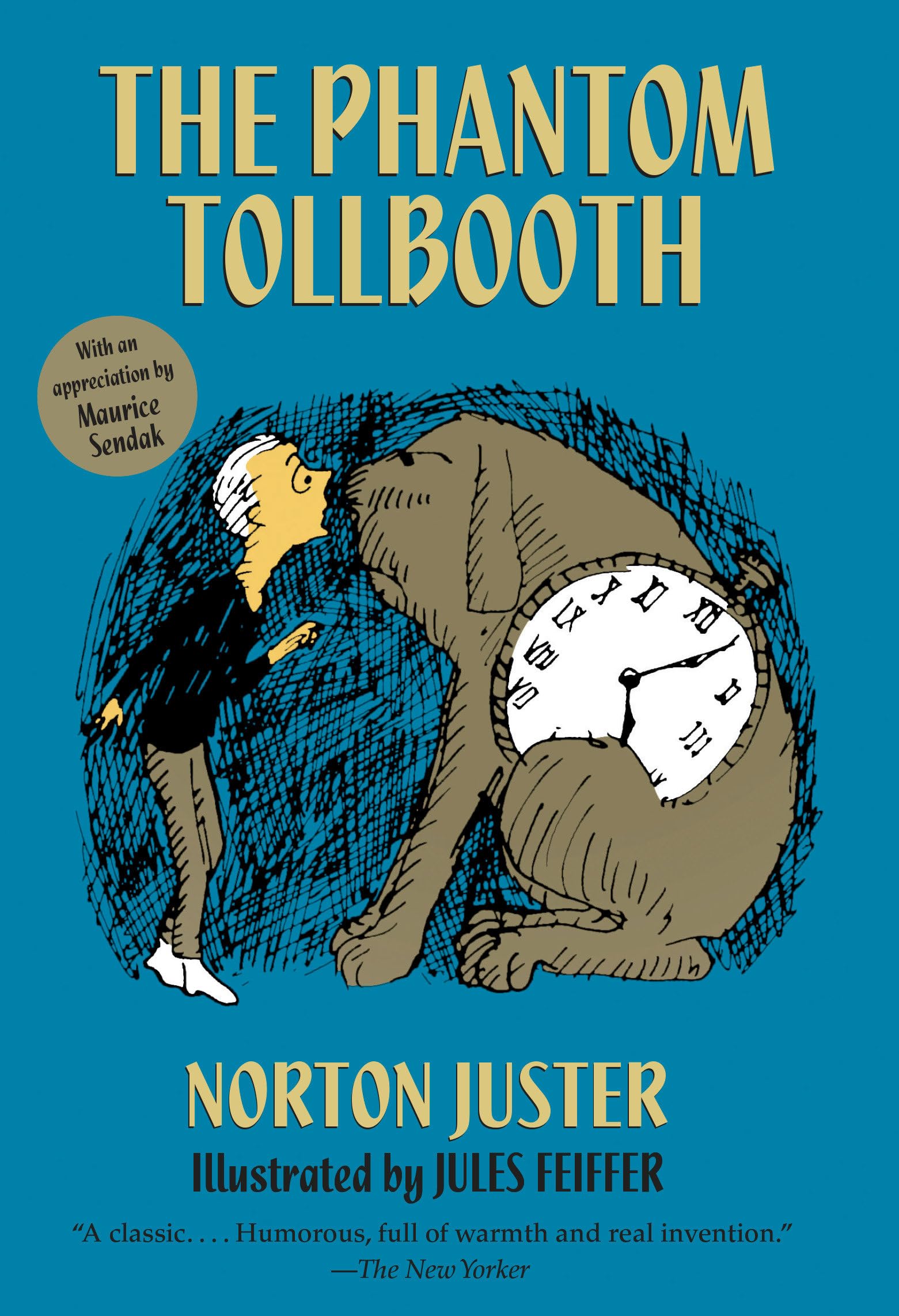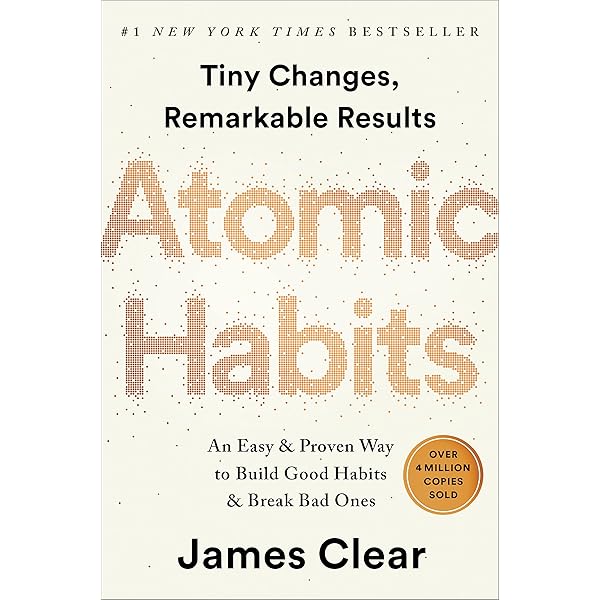The One and Only Ivan

Author: Kathrine Applegate
Category: Fiction
My Rating: ★★★★★
My Thoughts
Have you heard of a book called “The One and Only Ivan” by Kathrine Applegate? It is a rich resource for cultivating intellectual curiosity in young readers. I would tell you about what is compelling about this book, including animals' rights, art as resistance, captivity, and freedom.
First, animal rights means being kind and thinking in the way animals think. People can’t keep animals in a cage just because people want to see them. In the book, Ivan lives in a small cage. We could be a voice for someone else who cannot speak up for themselves by telling others.
In the book, Ivan helps Ruby by drawing pictures, and Julia and George help put the drawings on the billboard, and the people save them. Julia, George, and others all help endangered animals.
Second, Ivan uses drawings as resistance and self-definition. Ivan likes to draw with mud when he was young. Ivan draws now while he is in the cage and sells his drawings in the gift shop for 24 dollars (25 with a frame). Essentially, art transforms the world from a small cage to a family worldwide.
Third, captivity and freedom are not in a small place. Ivan’s cage symbolizes captivity, but people think it is a place that is safe for animals and a place where people can see them. When someone is free, it means he or she is not confined to a small place and not forced to do things.
In conclusion, The One and Only Ivan is a must-read book for three reasons: animal rights, art as resistance, and self-definition, which is all about showing empathy and kindness to both animals and humans.
Matilda

Author: Roald Dal
Category: Fiction
My Rating: ★★★★★
My Thoughts
The book Matilda is written by Roald Dal, the same author as Charlie and the Chocolate Factory. It is full of intellectual rigor, curiosity, critical thinking, ethical reflection, and resilience. The main character in the story has many good things in it, too. The main character self-learns, solves creative problems, and more.
When Matilda is three years old, she can already read books that not everybody can, and when she is five years old, she can already read complex literature. She visits the library by herself. It makes many people like to learn. We can make a Matilda-style book fair in many places, and we can do better if we do not just want to attend an Ivy League school.
It uses many literary techniques, like hyperbole, to describe Ms. Trunchbell. This will help us write more and better than before, and use literary devices to write essays and stories just because of the book.
Matilda’s intellectual curiousity enables her to learn many things, like multiplication, which is better than all years old children. However, what truly sets Matilda apart is her superpower! She can control things using her eyes. She uses this power to help Ms. Honey by writing messages to someone using her eyes. She must be very focused to perform her magic, which teaches children to be more focused.
In conclusion, Matilda was a must-read book for three reasons. Matilda promotes intellectual pursuit not by enforcing elitism, but by nurturing intellectual independence, ethical clarity, and resilience. Moreover, it shows children that brilliance is not a matter of privilege, but a matter of mindset, courage, and curiosity.
Spinning Wisdom: In Dialogue with E.B. White
Author:
Category: Fiction
My Rating: ★★★★★
My Thoughts
Spinning Wisdom: In Dialogue with E.B. White
Only E.B. White could take the unlikely friendship between a runt pig and a barn spider and turn it into a story that continues to resonate across generations. It’s not often that a writer captures the quiet strength of loyalty, or the beauty in something as small as a word spun into a web. Charlotte’s Web narrates a touching tale of Wilbur, a pig marked for slaughter, and Charlotte, the spider who saves him not with force, but with language and love. Sitting down with E.B. White—even just in imagination—would constitute a precious opportunity to talk about what it really means to be a friend, why words matter, and how to face the end of things with honesty, dignity, and heart.
If I had the chance to speak with E.B. White, my first question would be this: How did he imagine a character as noble and selfless as Charlotte—a spider who gives everything for her friend, not for recognition, but simply because she cares? Charlotte never seeks attention or praise. She spins words into her web to save Wilbur, and when her purpose is fulfilled, she dies quietly, unnoticed by the world she helped change.
What inspired such a quiet yet heroic presence? Charlotte always seems to appear when Wilbur needs her most. In moments of fear or sorrow, she offers wisdom and comfort. There is something deeply moving about that—about a character who gives so much without asking for anything in return. It makes me wonder if White intended Charlotte to be a symbol of true friendship: steady, selfless, and profoundly kind.
The moral seems clear—real friendship does not demand grand sacrifices, but it does require sincerity, care, and showing up when it matters. We do not always have to give everything to be a good friend, but bringing joy, comfort, and understanding into someone’s life can be just as powerful. In the final chapter, Charlotte’s kindness lives on as her children return year after year. It is as if her spirit, her quiet goodness, continues to shape Wilbur’s life long after she is gone.
Charlotte may be small, but her legacy is enormous—a gentle reminder that real courage often speaks in whispers, not shouts.
My next question to White would be this: Why did you choose simple, written words spun into a web as Charlotte’s tool to save Wilbur? Of all the ways a character might rescue another, Charlotte’s method is quiet, deliberate, and deeply symbolic. She does not fight or plead—she writes. Words like “Some Pig” and “Terrific” become more than just praise; they become a lifeline.
Charlotte's choice reflects White’s deep trust in the power of language. Through a few carefully chosen words, Charlotte’s web becomes a canvas for persuasion, a bridge between life and death. Charlotte alters the way people see Wilbur. She reshapes his fate not with strength, but with story.
White’s novel shows that language can elevate the overlooked, give dignity to the ordinary, and offer hope in the face of loss. Charlotte’s words remind us of the power words hold in our own lives. Whether through writing, reading, or the encouragement of another, language has the quiet strength to transform, to uplift, and even, in its own way, to save.
Another question I would love to ask Mr. White, is what inspired him to handle death—especially Charlotte’s—with such calm and dignity? Her passing is neither tragic nor sensational. It feels natural, even noble, as though it is simply part of life’s quiet rhythm. She is born, she gives everything she has to help Wilbur, and then she dies alone at the fair, having fulfilled her purpose.
There is something deeply moving about White's philosophy—that death is not the end of meaning. Charlotte may be gone, but because of her love, her words, and her quiet bravery, Wilbur survives. More than that, he carries her memory forward. Her children, too, return each year, soft echoes of her presence, reminders that love—when true—leaves traces behind.
In the end, White's novel gently reminds us that friendship is powerful, that words can transform reality, and that mortality can be met with peace. Perhaps that is the quiet message Charlotte’s Web carries: that a life well-lived is one that weaves connection, kindness, and purpose into the world—and leaves it better than it was.
This imagined conversation has inspired me to write more thoughtfully, to live more kindly, and to find beauty even in the things that must come to an end. In doing so, I hope to live more fully—and more lovingly.
The Phantom Tollbooth

Author: Norton Juster
Category: Fiction
My Rating: ★★★★★
My Thoughts
The Phantom Tollbooth is truly a fantastic book because it helps the reader develop many skills. It is an especially beneficial book for young children for this precise reason. First, there are many puns and word plays, like Doldrum and Lethargies. The book facilitates the process of learning sophisticated diction through its ingenious use of puns and word plays. The two princesses’ names, Rhyme and Reason, exemplify Juster’s innovative approach. Second, there are many excellent words for young children to acquire. I truly appreciate Juster’s attempt to make word learning such an enjoyable experience.Third, the sheer number of valuable lessons in the book makes The Phantom Tollbooth a must-read. One of the most precious lessons is about time and responsibility. The watchdog Tock is charged with the immense task of time-keeping, signifying the importance of time-keeping in our lives. Another equally significant moral lesson pertains to problem-solving. Milo encounters many problems that require his ingenuity and his willingness to overcome challenges such as soundlessness. Fourth, the book is highly imaginative. For instance, sounds become something palpable that characters can catch. For another instance, numbers could be dug out from a cave! In short, Juster’s The Phantom Booth truly inspires me to attempt writing a fantasy of my own. In conclusion, Juster’s The Phantom Tollbooth is undoubtedly an intriguing masterpiece that encompasses prodigious imagination, priceless moral lessons, and immense wealth of vocabulary for its young readers.
Atomic Habits

Author: James Clear
Category: Fiction
My Rating: ★★★★★
My Thoughts
This book completely changed how I approach habit formation. The concept of "1% better every day" is simple yet profound. Clear's explanation of the habit loop (cue, craving, response, reward) provided me with a framework to understand my own behaviors.
What stood out most was the idea of identity-based habits - focusing on who you wish to become rather than what you want to achieve. This subtle shift in perspective has helped me stick to my reading and exercise routines much more consistently.
The writing is clear and practical, with numerous real-world examples that make the concepts easy to grasp and apply. Highly recommended for anyone looking to make lasting changes in their life.